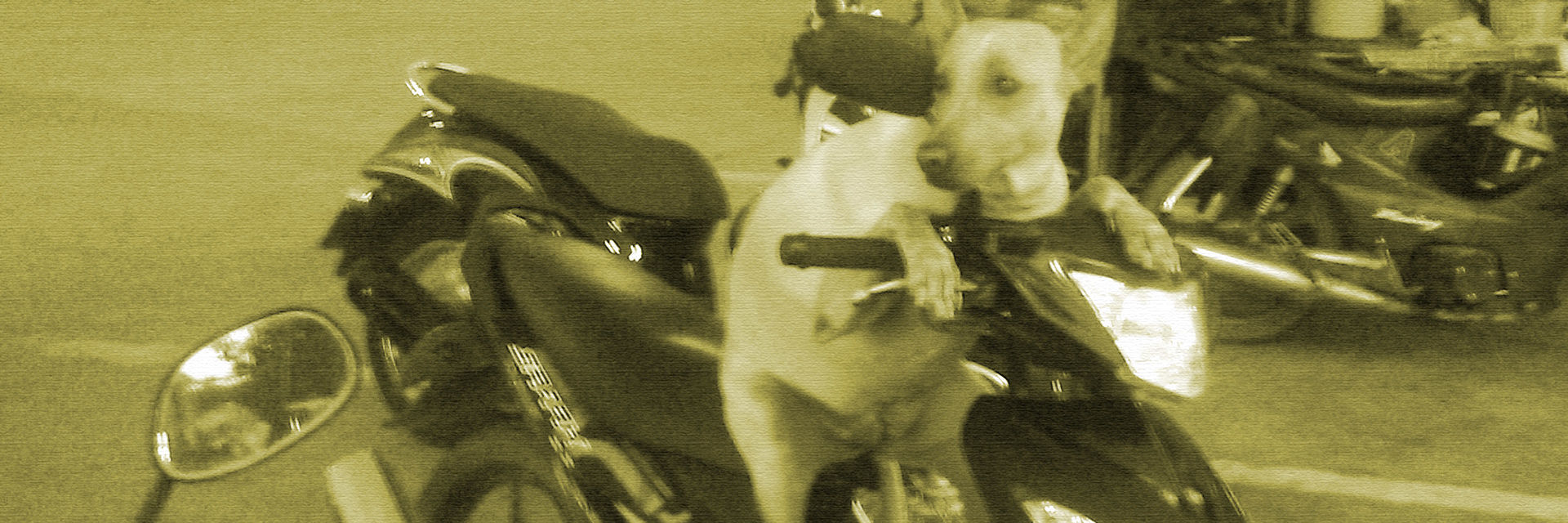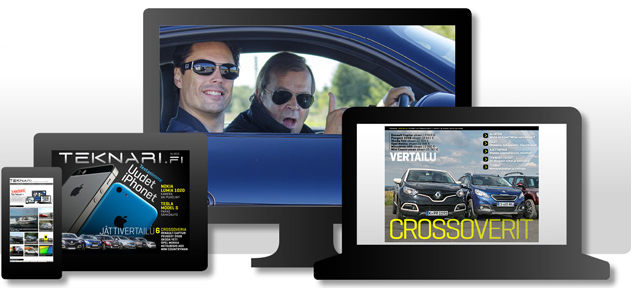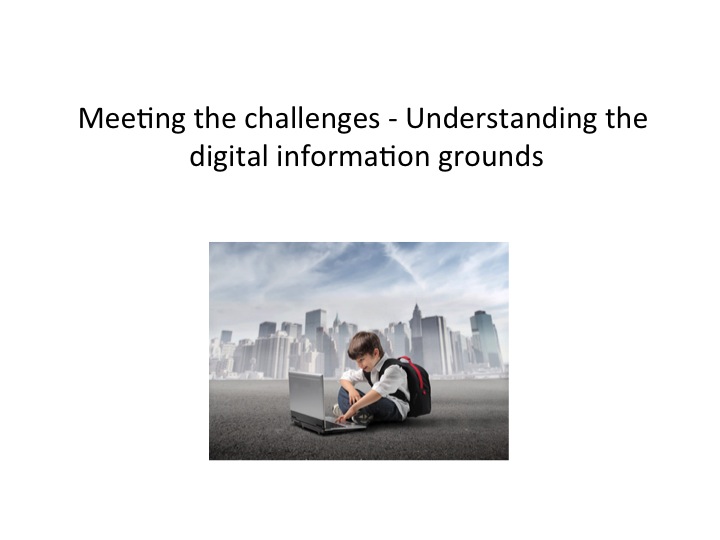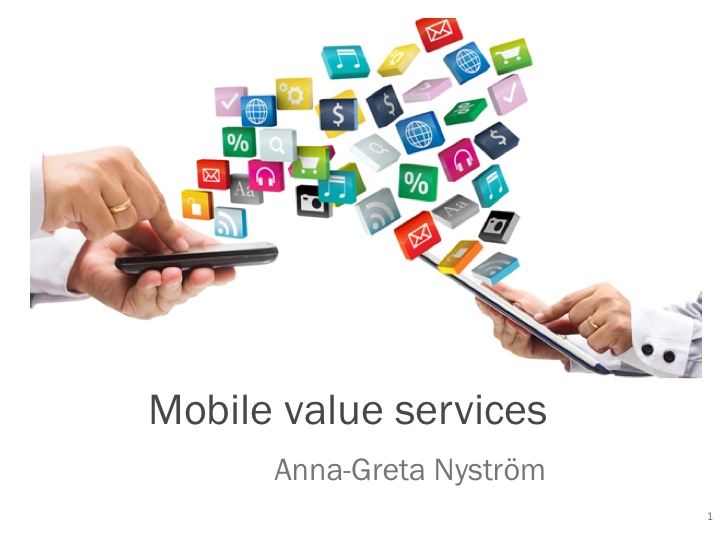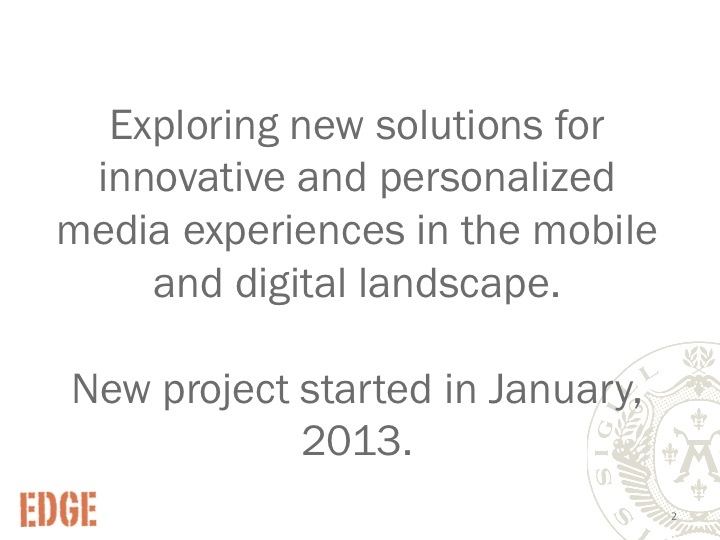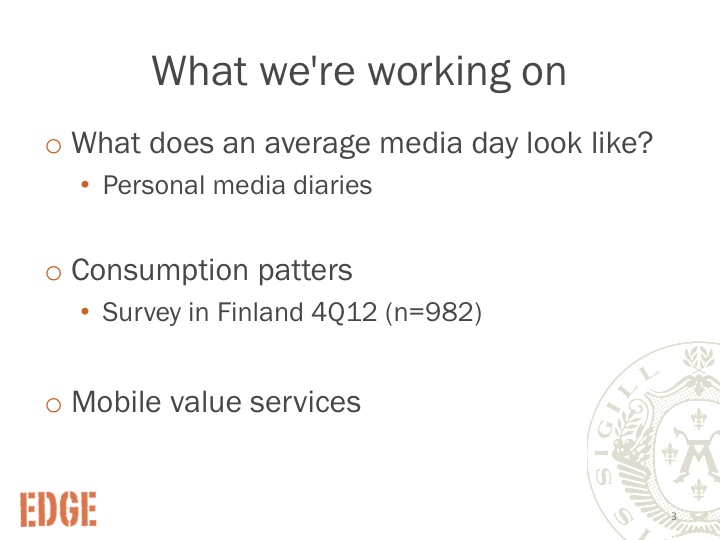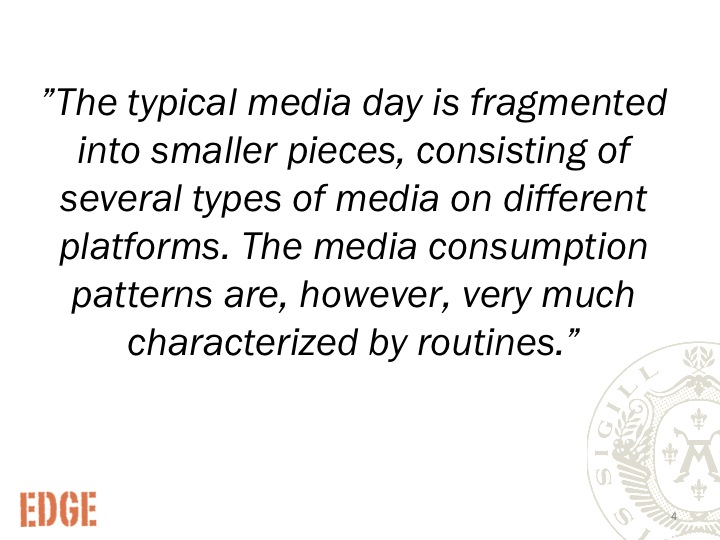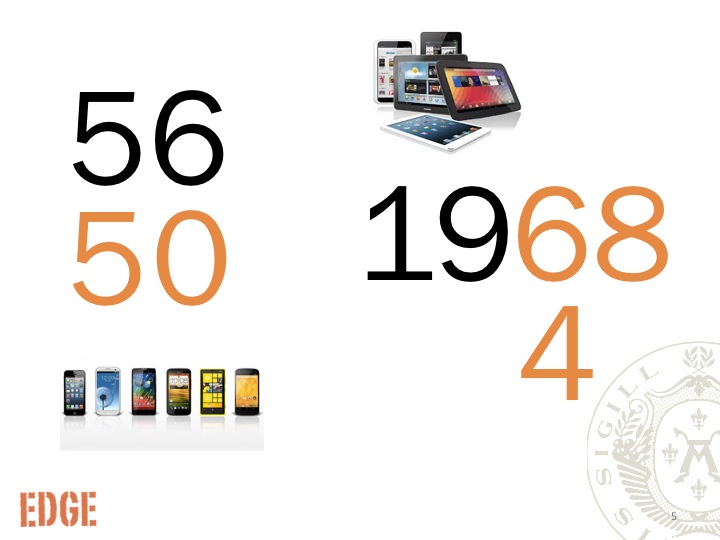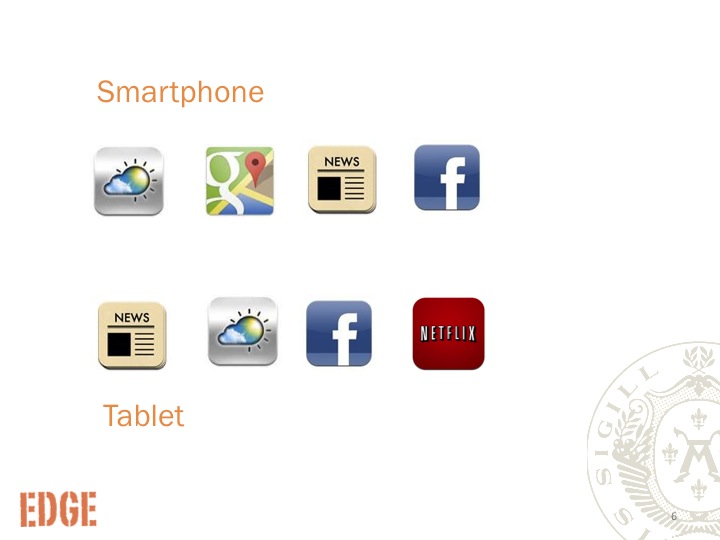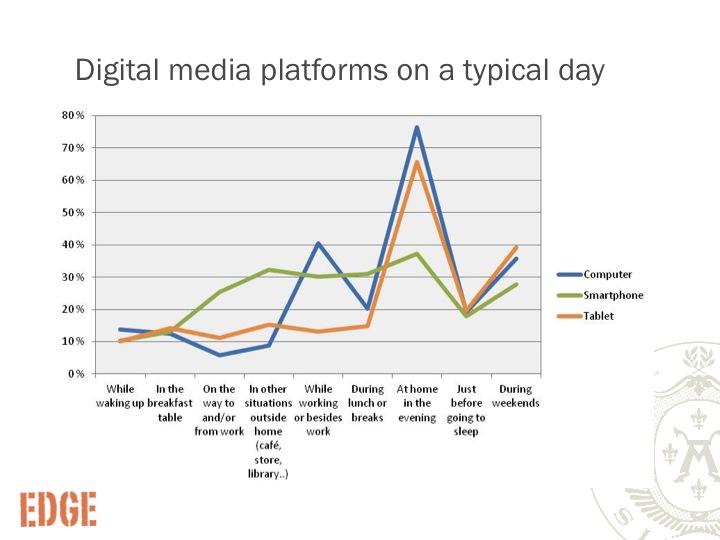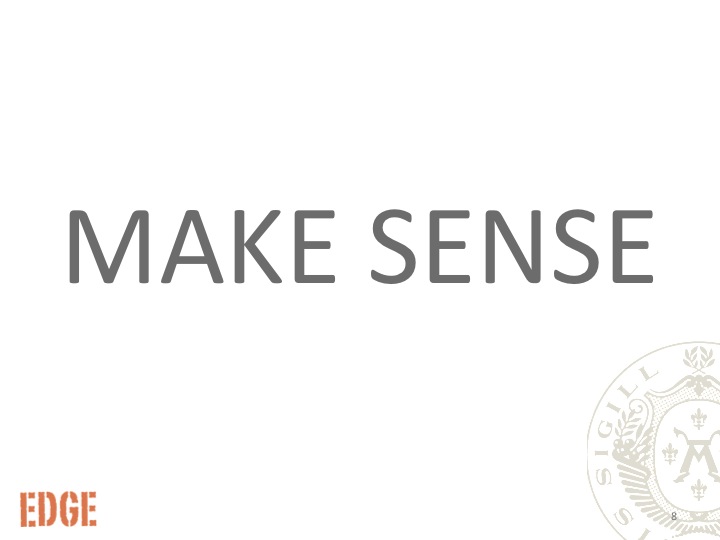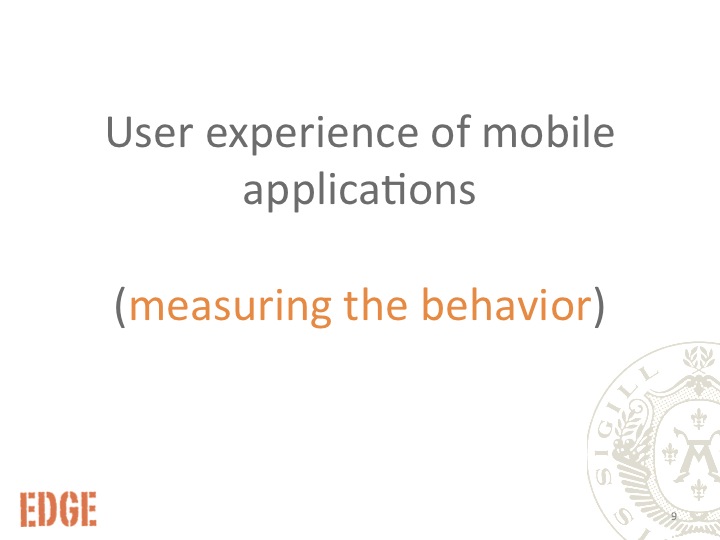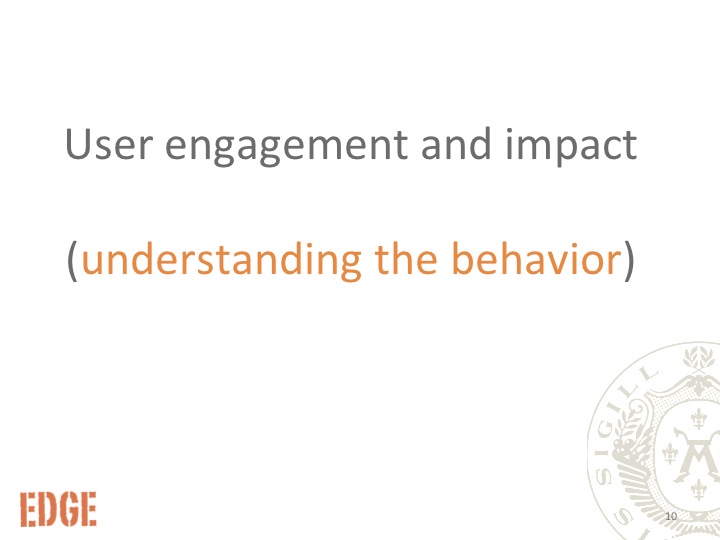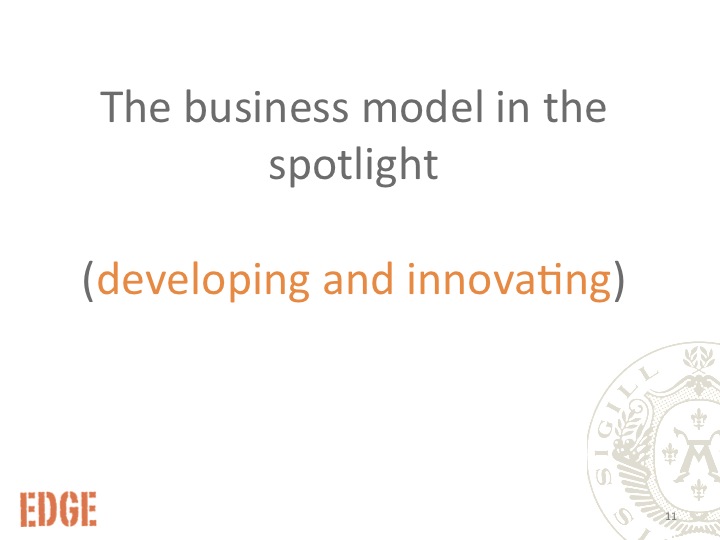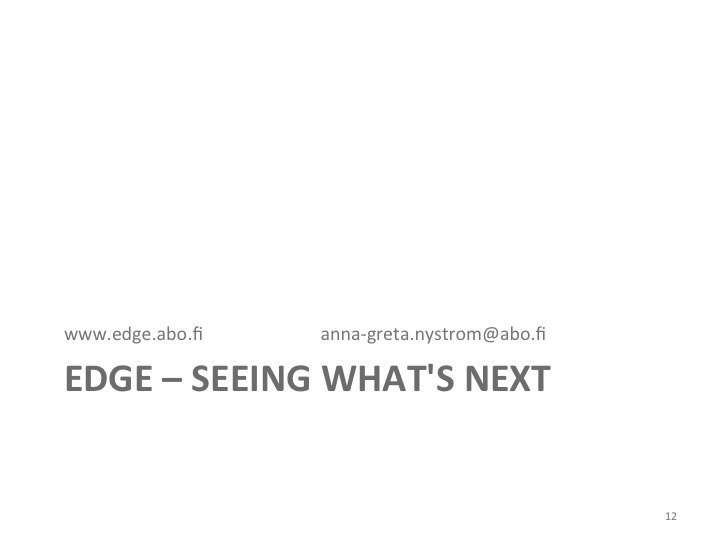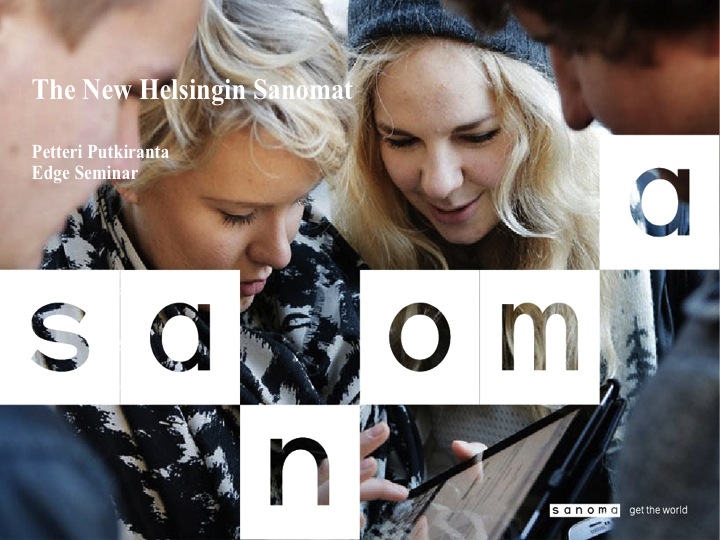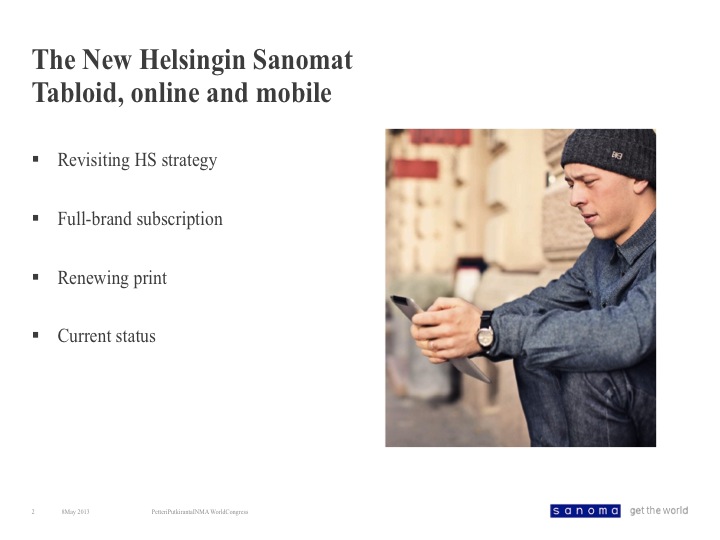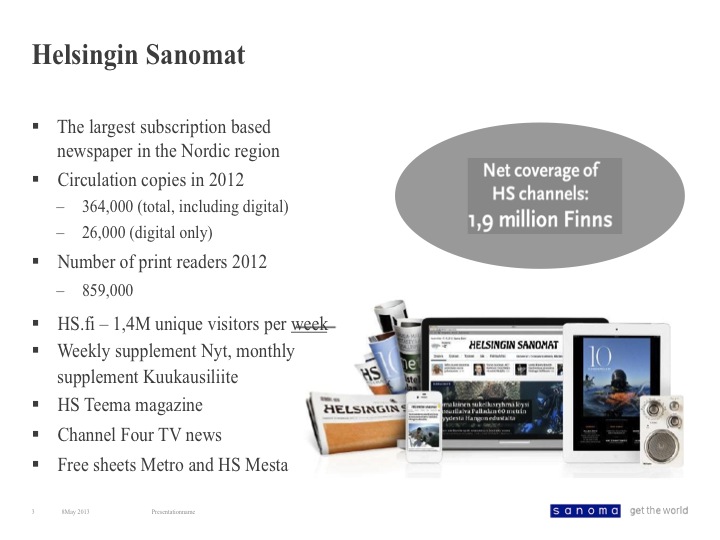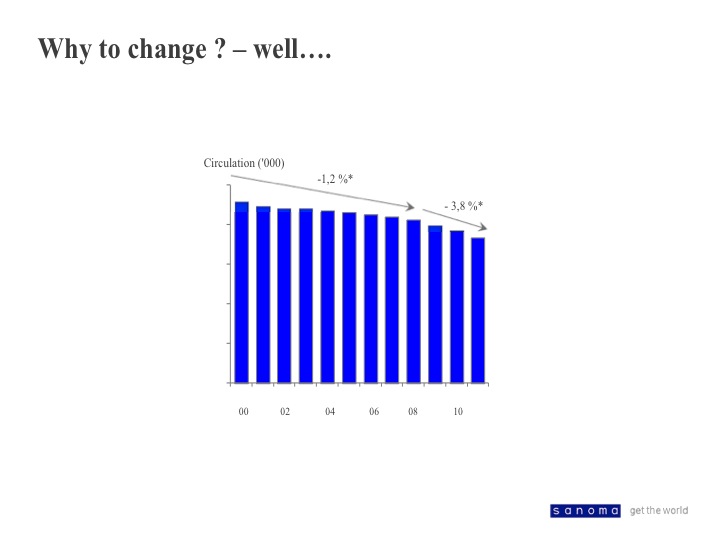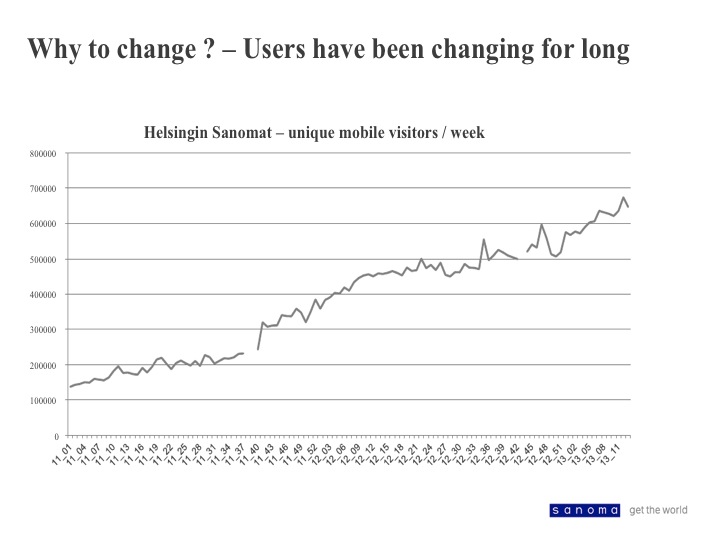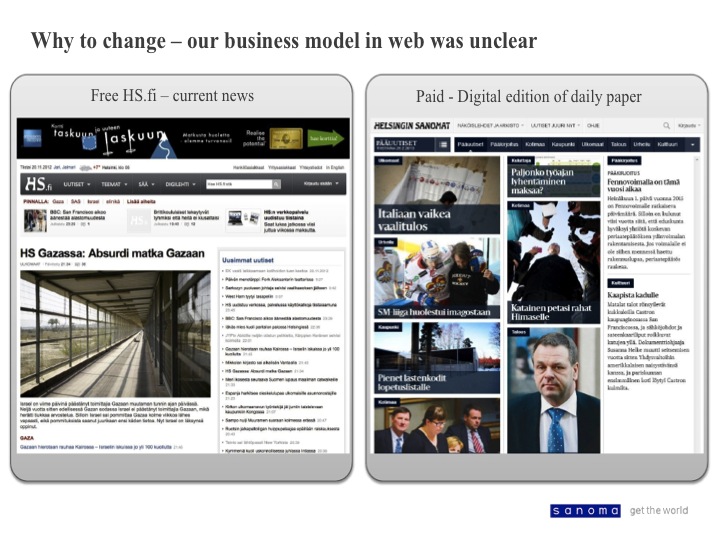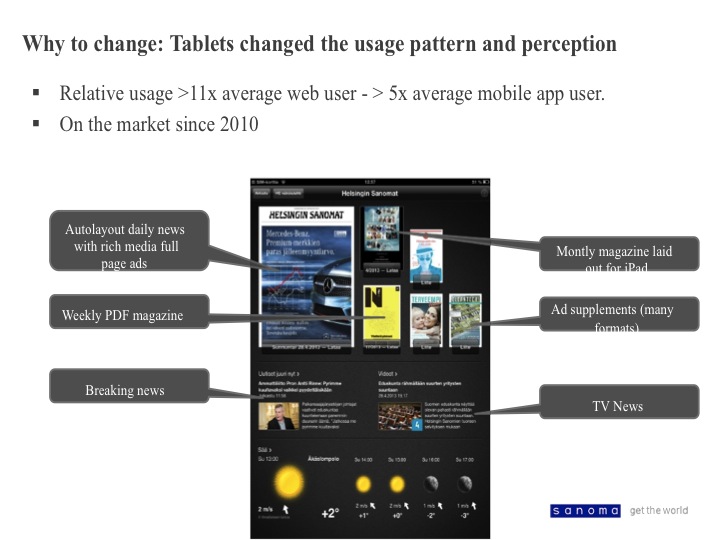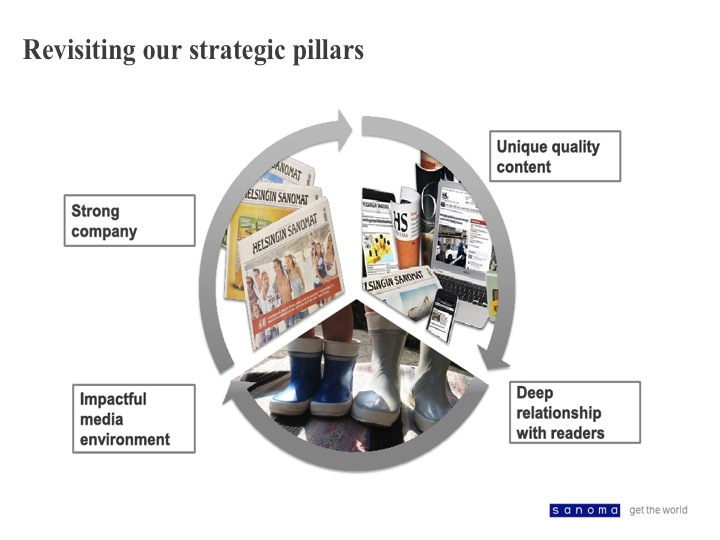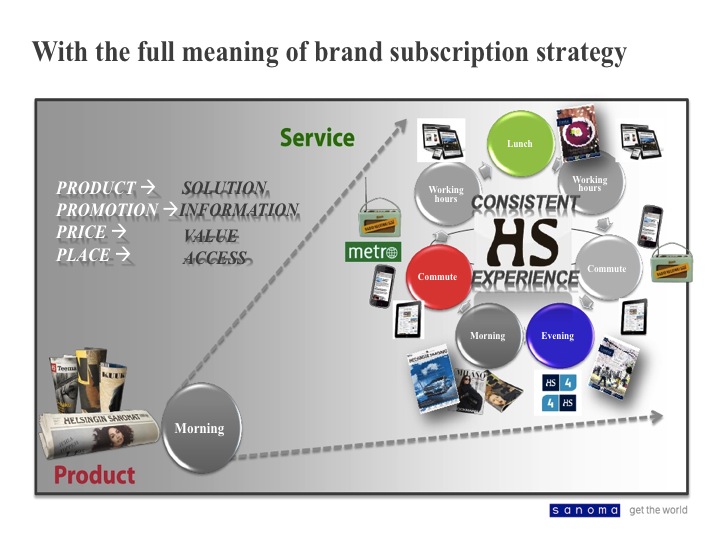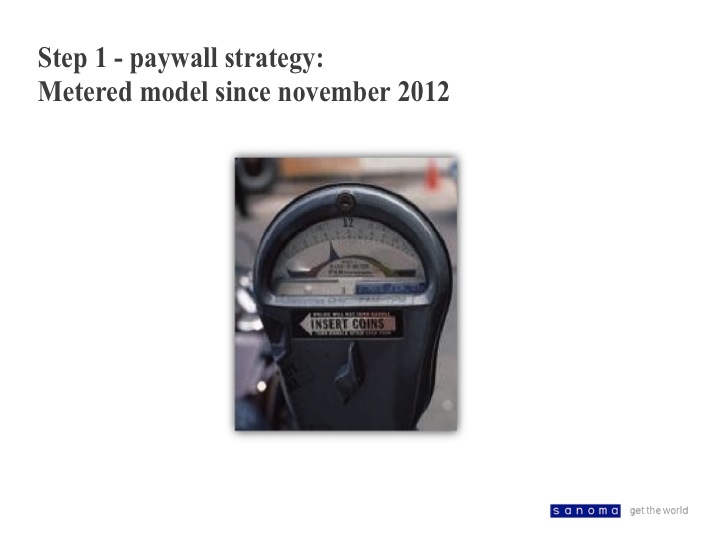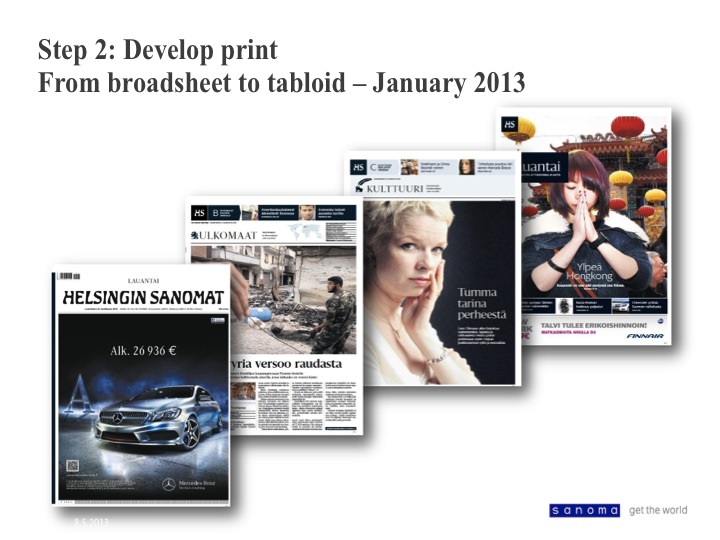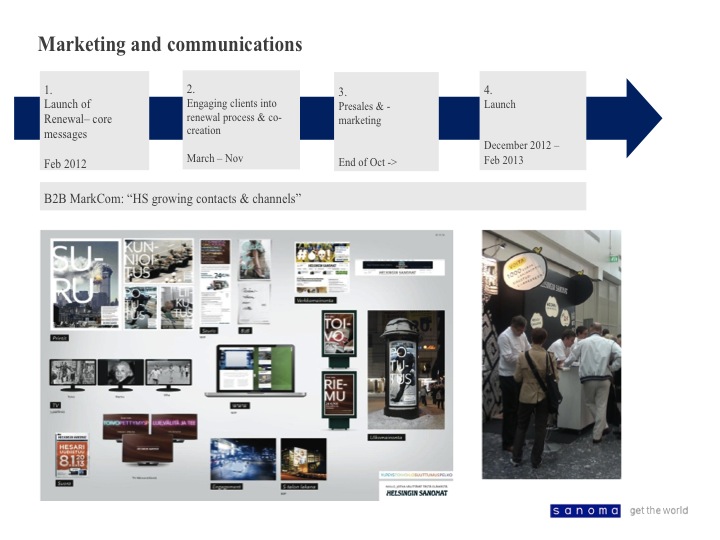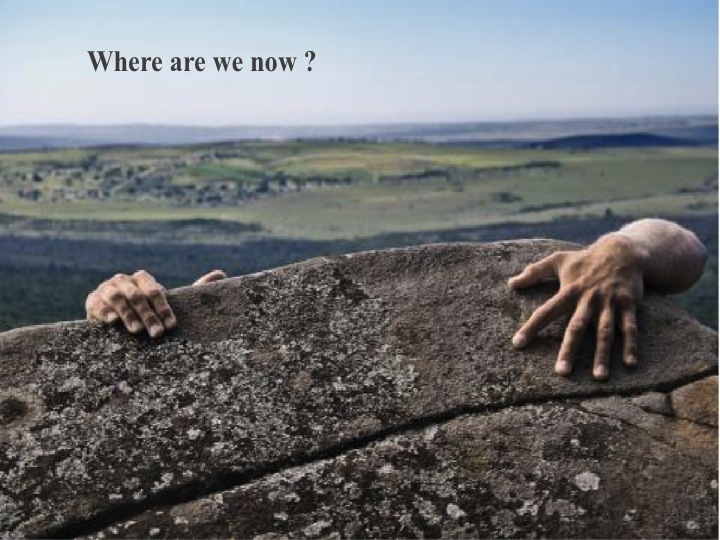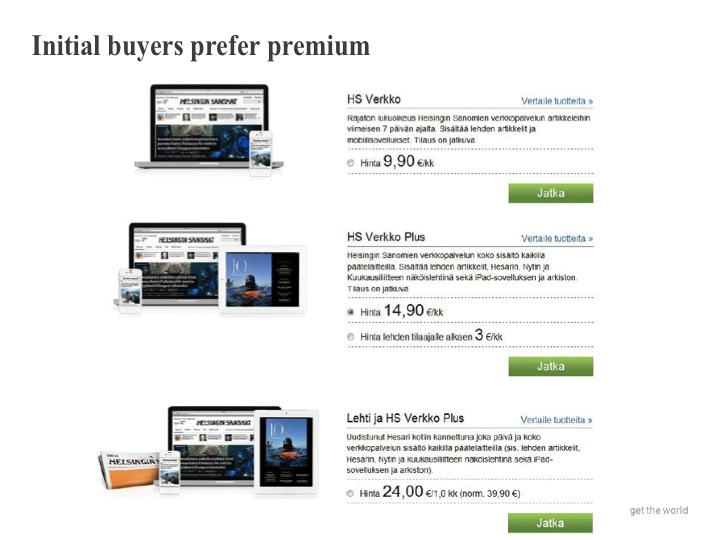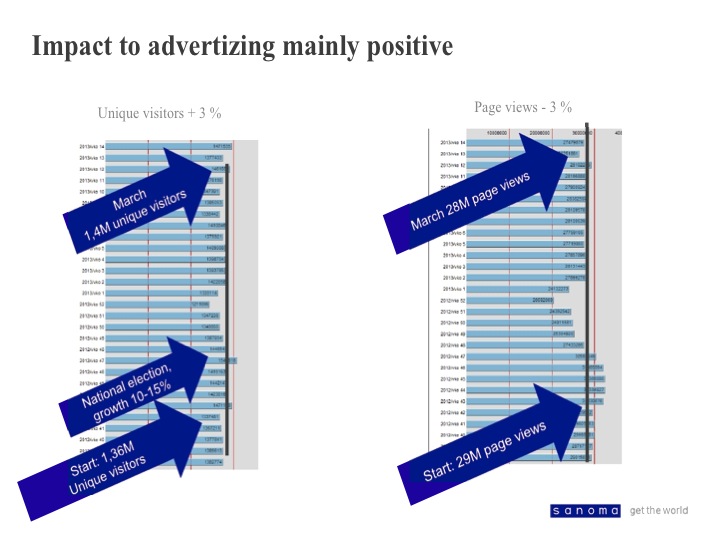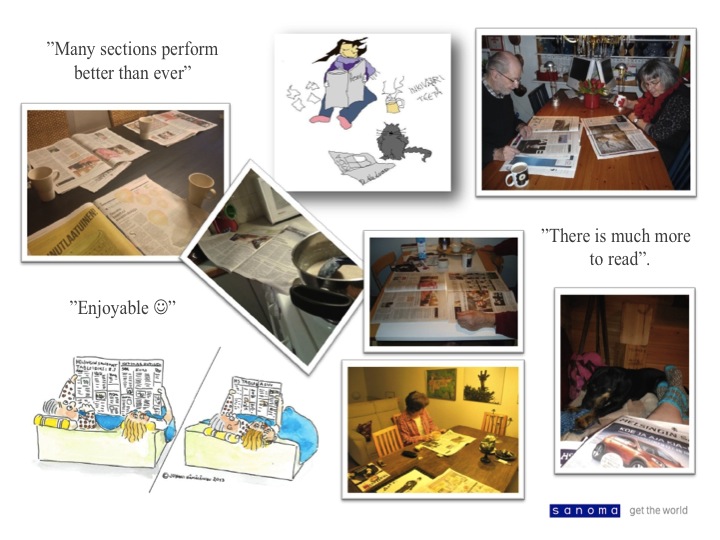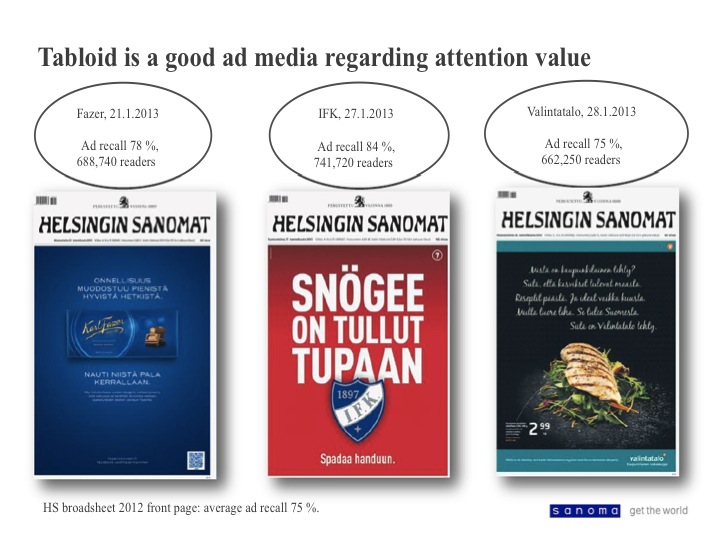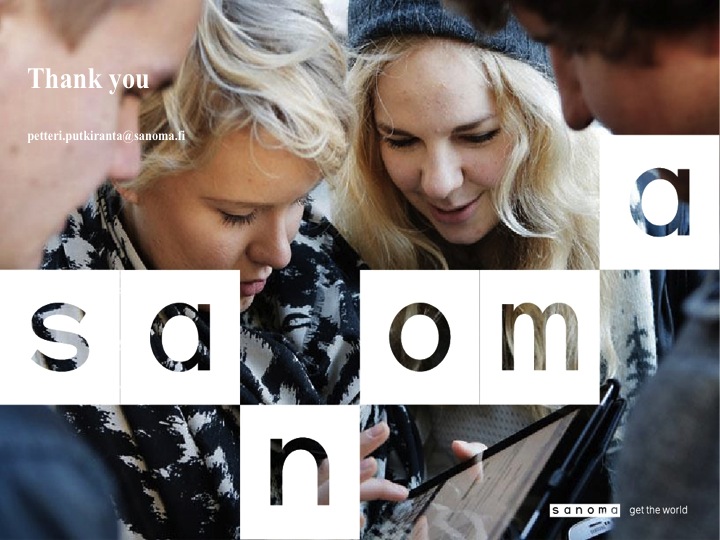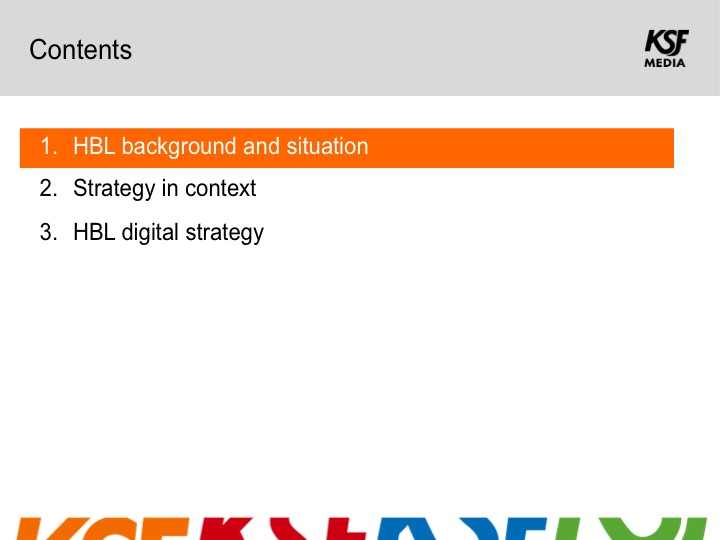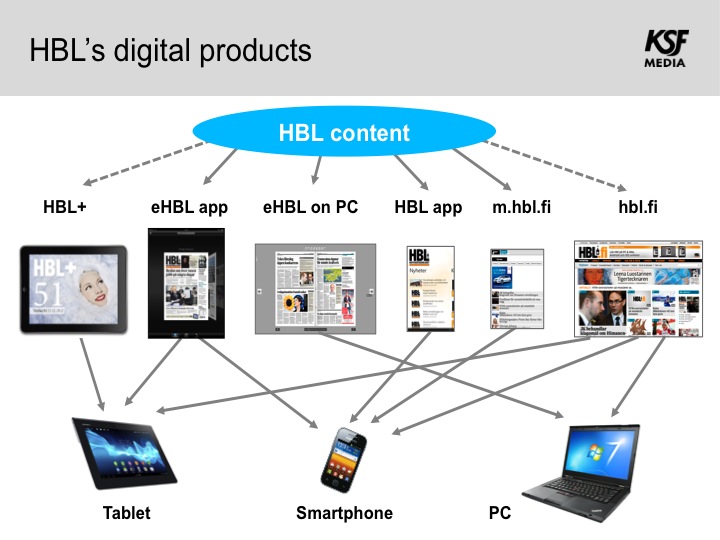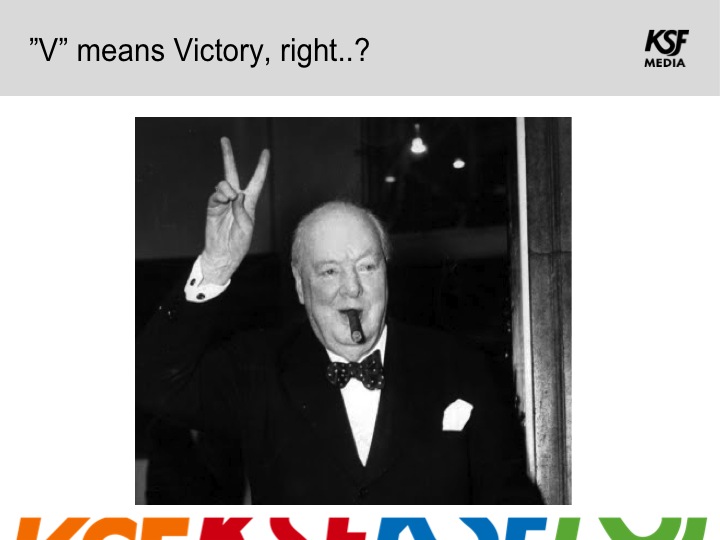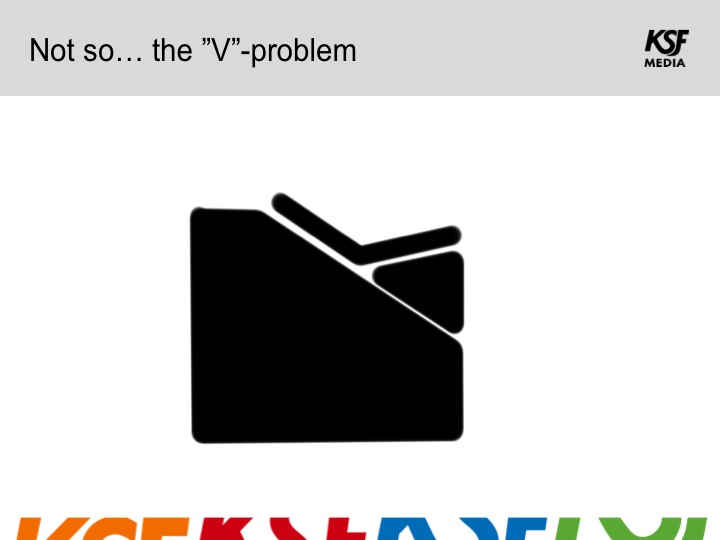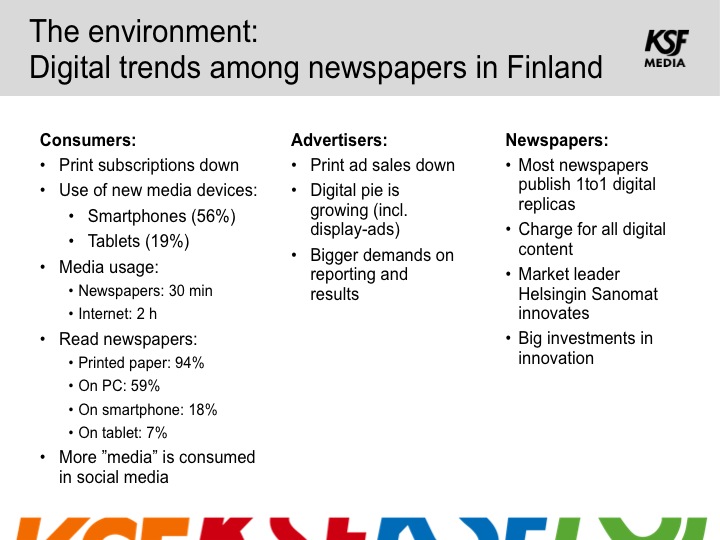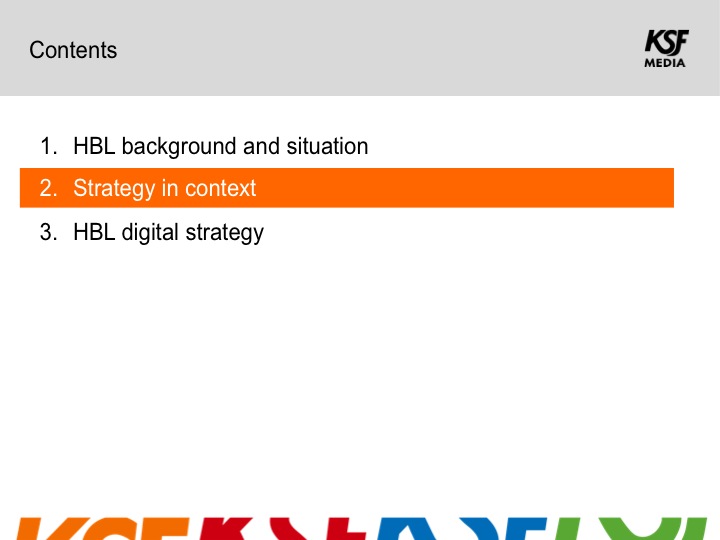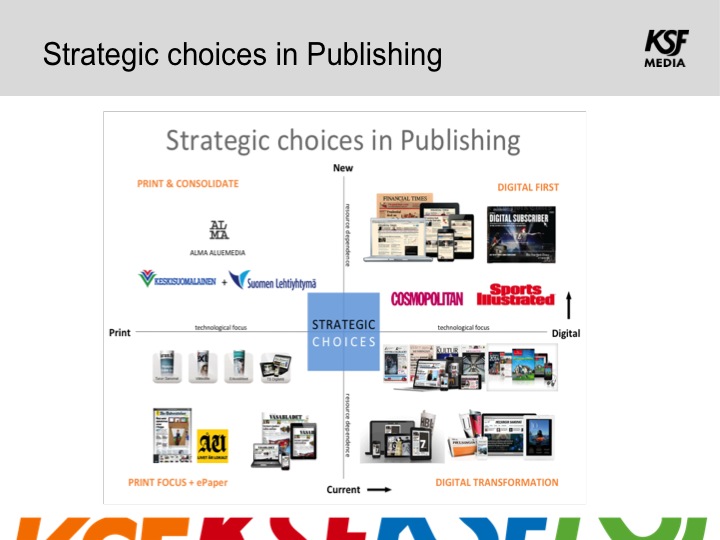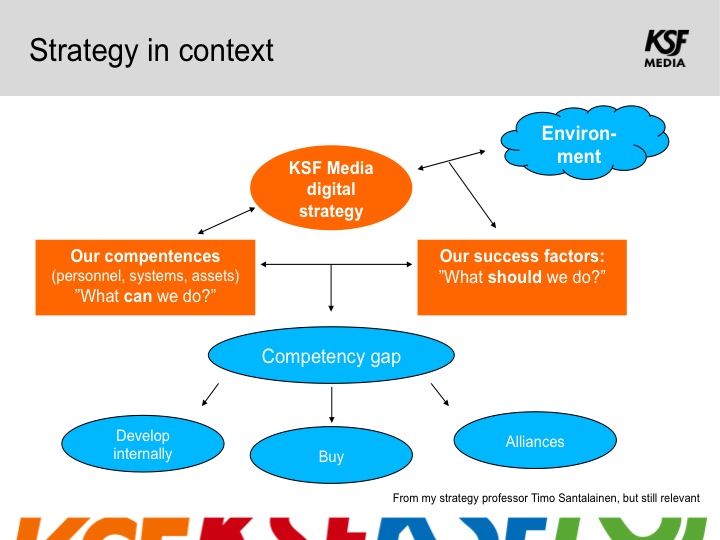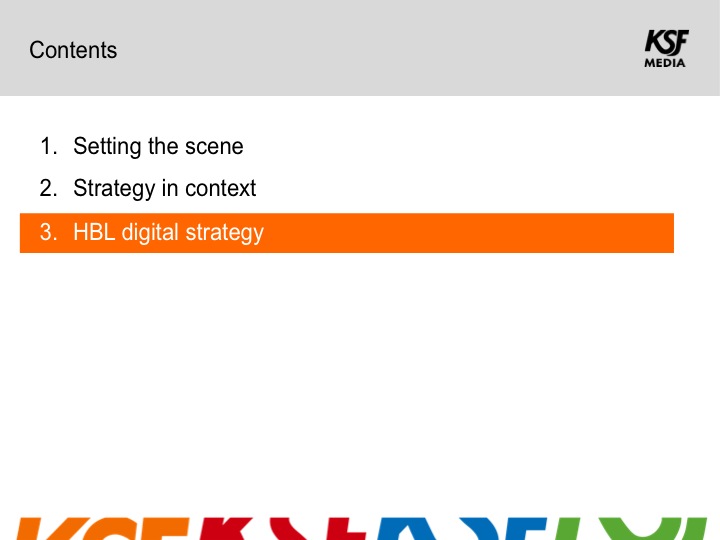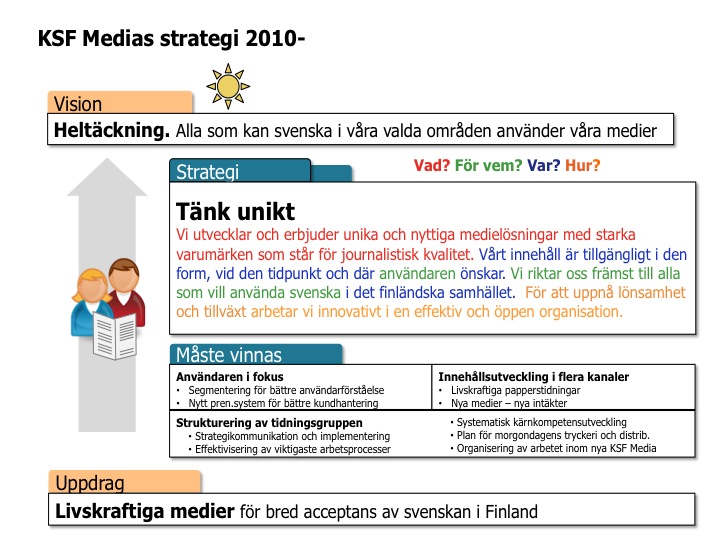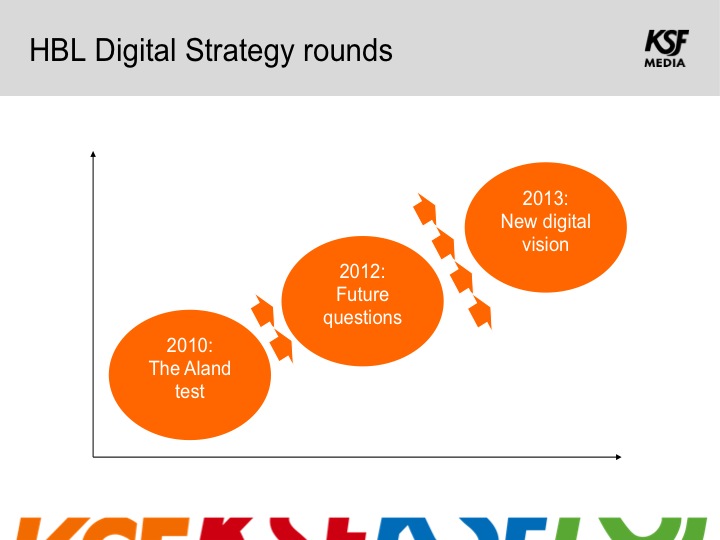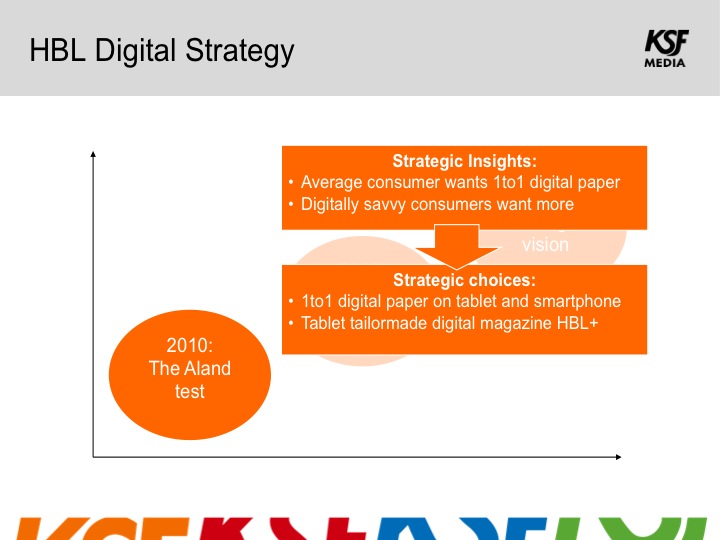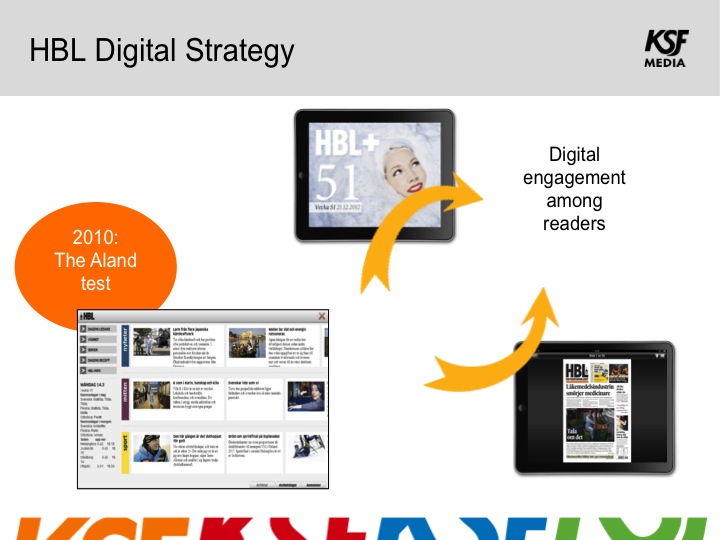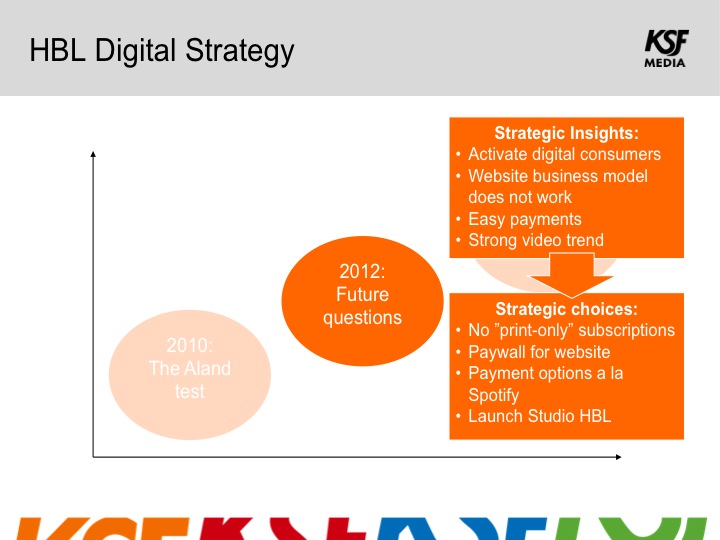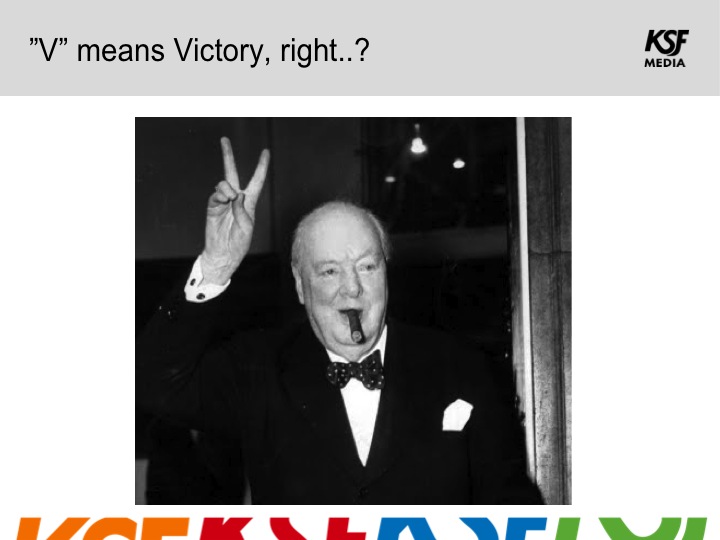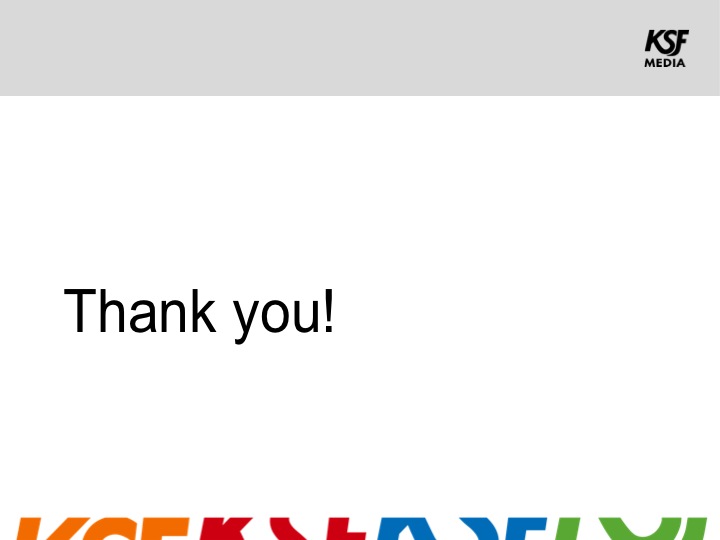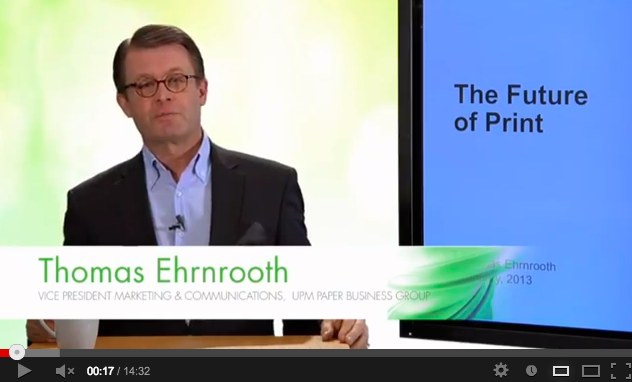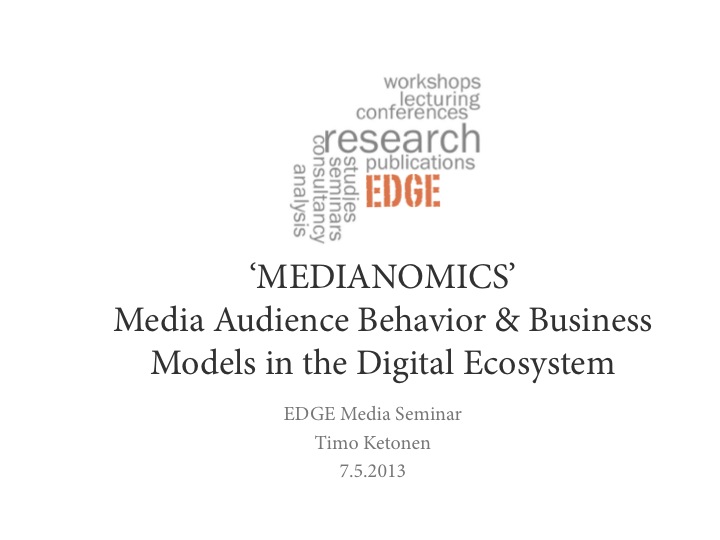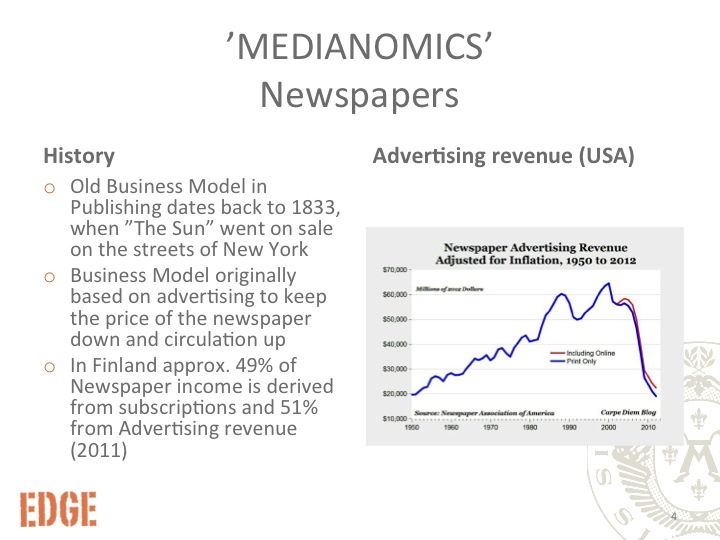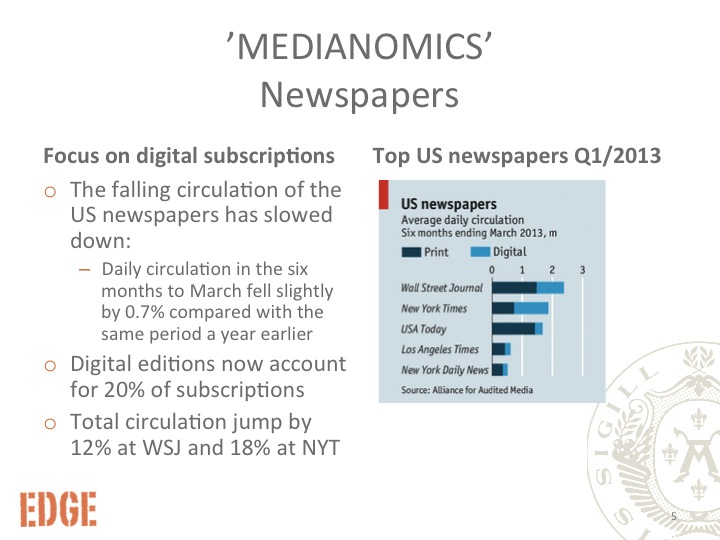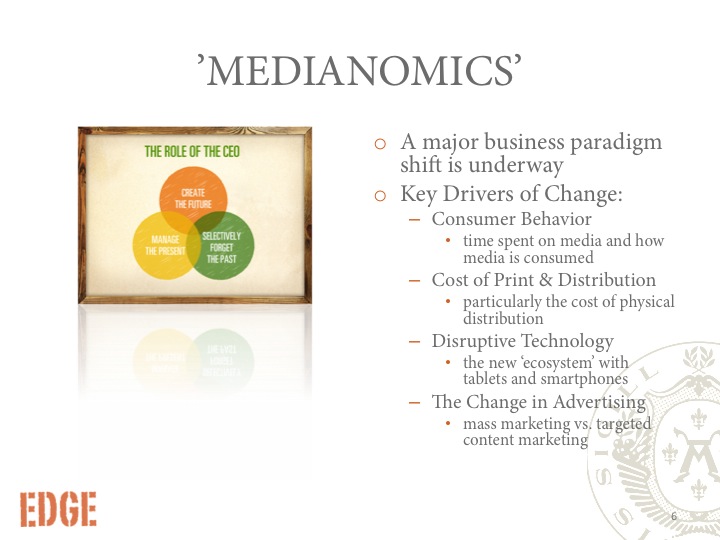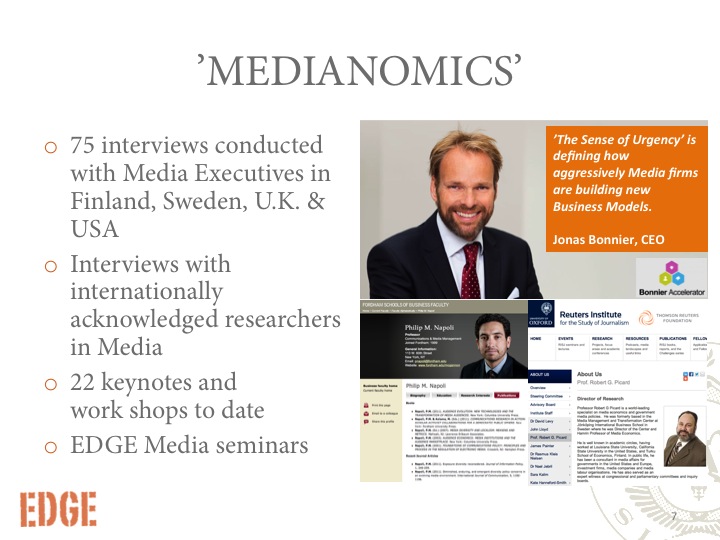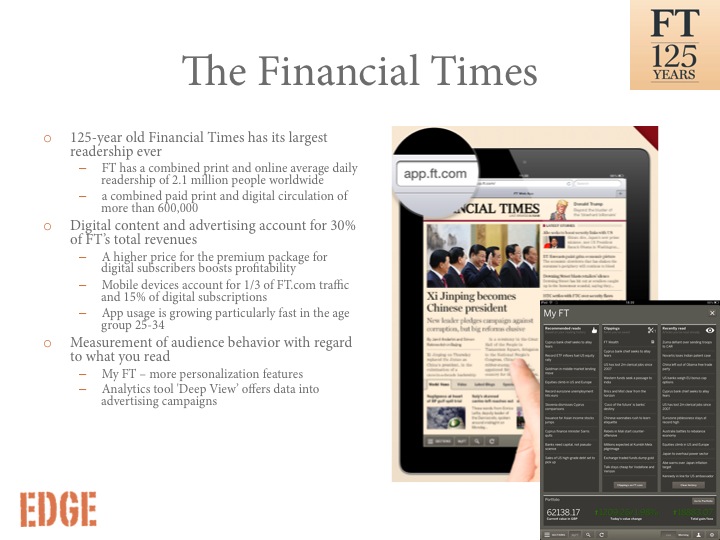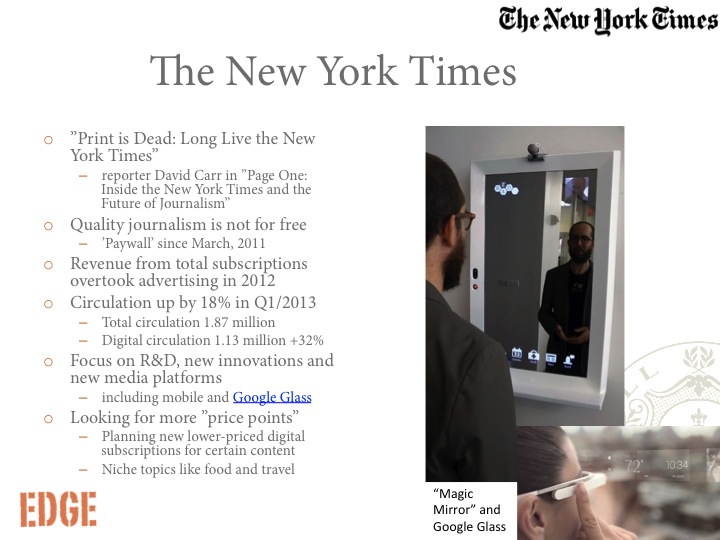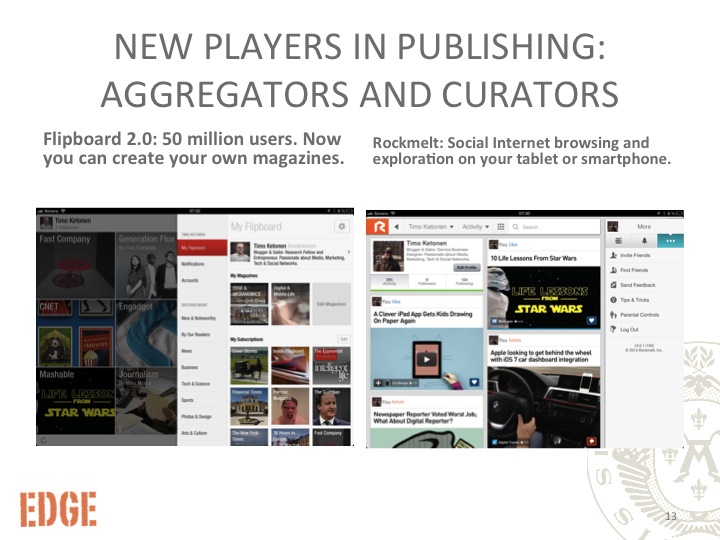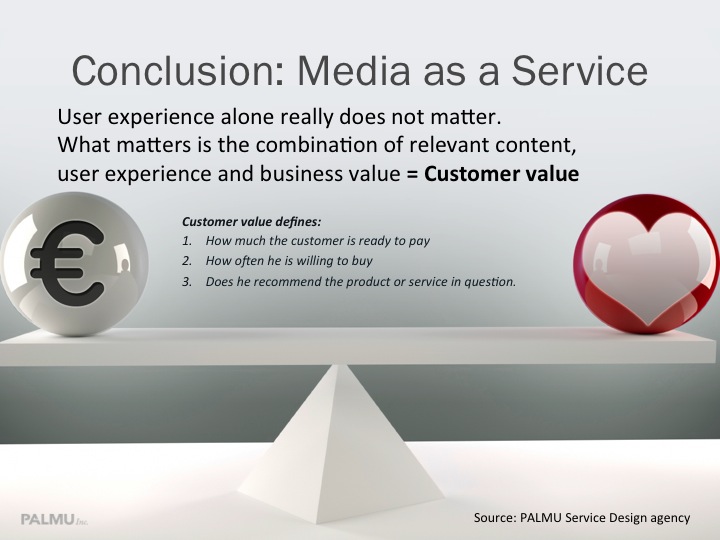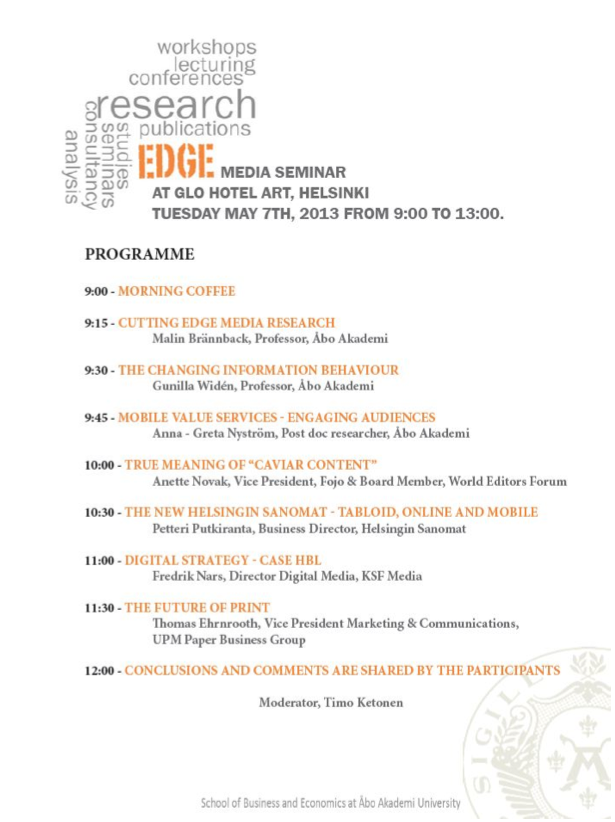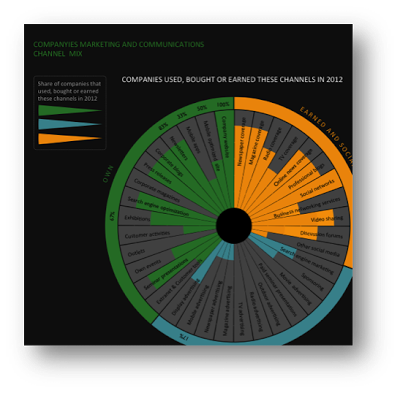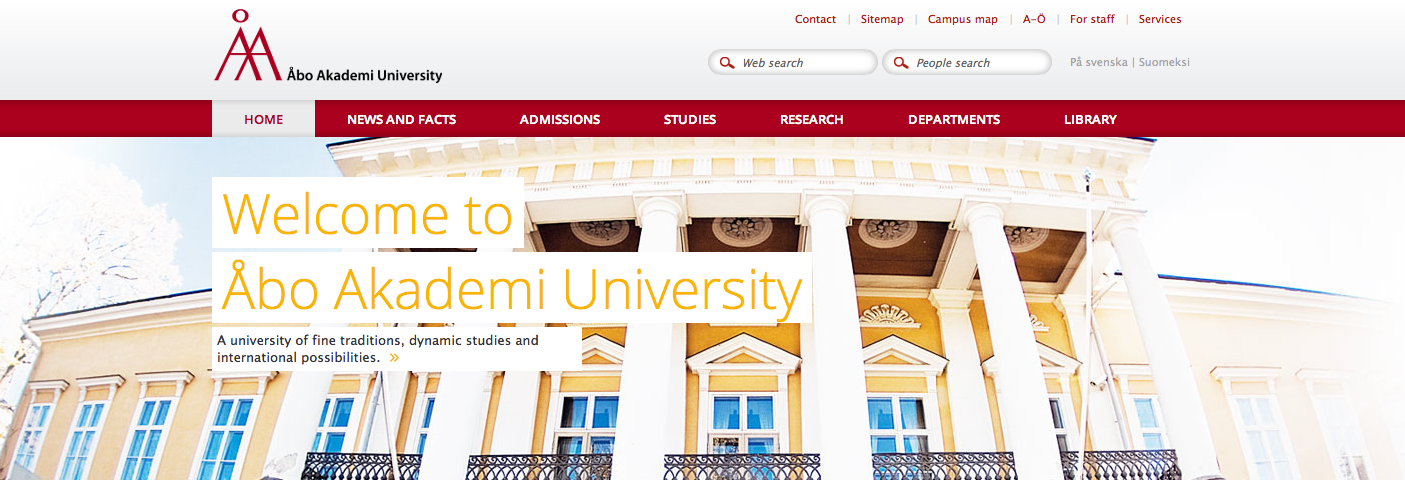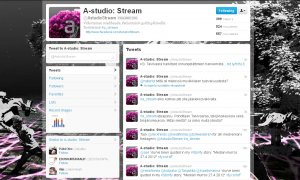A media jungle indeed! Going back to our previous post about our diary study (available here) when we still stood with the machete in our hands, we now finally have the results. This blog post is a short overall look on the results.
To refresh our memory, the Personal Media Day study explores the consumers’ daily media routines over time. Consumption was looked at during different times of the week (Monday-Sunday), and different times of the day (morning, day, and evening). Methodologically, e-diaries were used to gather data about the consumed media by focusing on four key questions: What media is consumed, how it is consumed (e.g. print, TV, computer, mobile), for how long (in minutes), and why. In addition, a background survey was conducted to collect demographic data, as well as data about expenditure, media attitudes and technology ownership.
A glance of the results
A total of 95 people participated in the study either for one or two weeks. In total, data from 957 days of media was collected, and a total of over 4600 hours. All data was coded and analyzed in Microsoft Excel, statistical analyzes were conducted with PASW. All results are looked at for different days of the week, as well as for different times of the day. Results are looked at as a sample total, as well as comparing gender and five different age groups (19 year-olds and younger, 20-27 year-olds, 28-44 year-olds, 45-63 year-olds, and 64 year-olds and older).
Computer, print, and TV take most of our media day. The length of media days varies; women spend on average most time on media in the end of the week while men in the middle of the week. Needless to say, media consumption differs also a lot between different age groups. In general, media is most consumed by the oldest age group (64 +) and least by the youngest age group (< = 19). Computer media is on average consumed most by the 20-27 year-olds and traditional media (print, radio, TV) is overall consumed most on average by the 64+ year-olds. According to our results, mobile media consumption is still a fraction of total time spent on media.
Depending on the day, our results show that about 25-35% of the daily media is consumed through the computer. Social media accounts for a third of this time, while different news media and online video take an equal account of around 10%. Facebook generates over 60% of the time spent on social media. The news media consumed with a computer consists of around 25-30% of reading afternoon papers, followed by the big daily newspapers. Only a very small share the consumed media is foreign. According to our study, traditional print media still accounts for around 20% of our total media day.
Looking at expenditure shows that print expenditure is linear with age, the older you are, the more you spend on print. Expectations of future expenditure are leaning towards a preference for digital (both Internet services, and media applications). This is true for all age groups, but strongest among those in the 45-63 years age range.
Age and attitudes towards media shows how younger generations, both women and men, value the Internet. Also, for them media is more about entertainment, social relations, and keeping up-to-date with things that interest them. The media consumption, especially among these younger generations, is also characterized by shorter media sessions on different media. These results supports also thoughts presented by Philip M. Napoli about the fragmenting media landscape in Audience Evolution: New Technologies and the Transformation of Media Audiences, a publication which provides an excellent overview of how new media technologies have changed the patterns of audience behavior. Although fragmentation can be notices, the media consumption still tends to be very routine-like, especially among the “older” age groups.
Fall 2012 – Adoption and usage of Mobile Value Services in Finland
Drawing from Timo’s personal blog and his blog post (available here), we’re now witnessing the paradigm shift from web to mobile with an abundance of apps for smart phones and tablets, truly functional platforms for mobile web services. If we look 4-5 years ahead into the future the forecast is that there will be more tablets than PC’s across the globe and the smartphone penetration will be quite high as well. According to a fresh study carried out by idean (available here), the smartphone penetration is about 50% in Finland this year and the forecast for year 2015 is up to 70%. Tablet device sales has boomed both globally and in Finland where the tablet penetration is expected to exceed one million in the beginning of year 2015.
Our focus at the EDGE Research Group will also be steered on these handheld mobile devices, especially on Mobile Value Services (MVS), i.e. non-core services or in short services beyond standard services that these platforms provide. To be more specific, our aim is to study among other things, attitudes and intentions towards using mobile applications, in other words the adoption of apps. Furthermore, we will try to distinguish different consumer profiles or clusters based on the actual usage of mobile apps. We hope to find answers to these questions through a survey, which is carried out during this fall.
Ron Lindqvist & Niklas Kiviluoto
